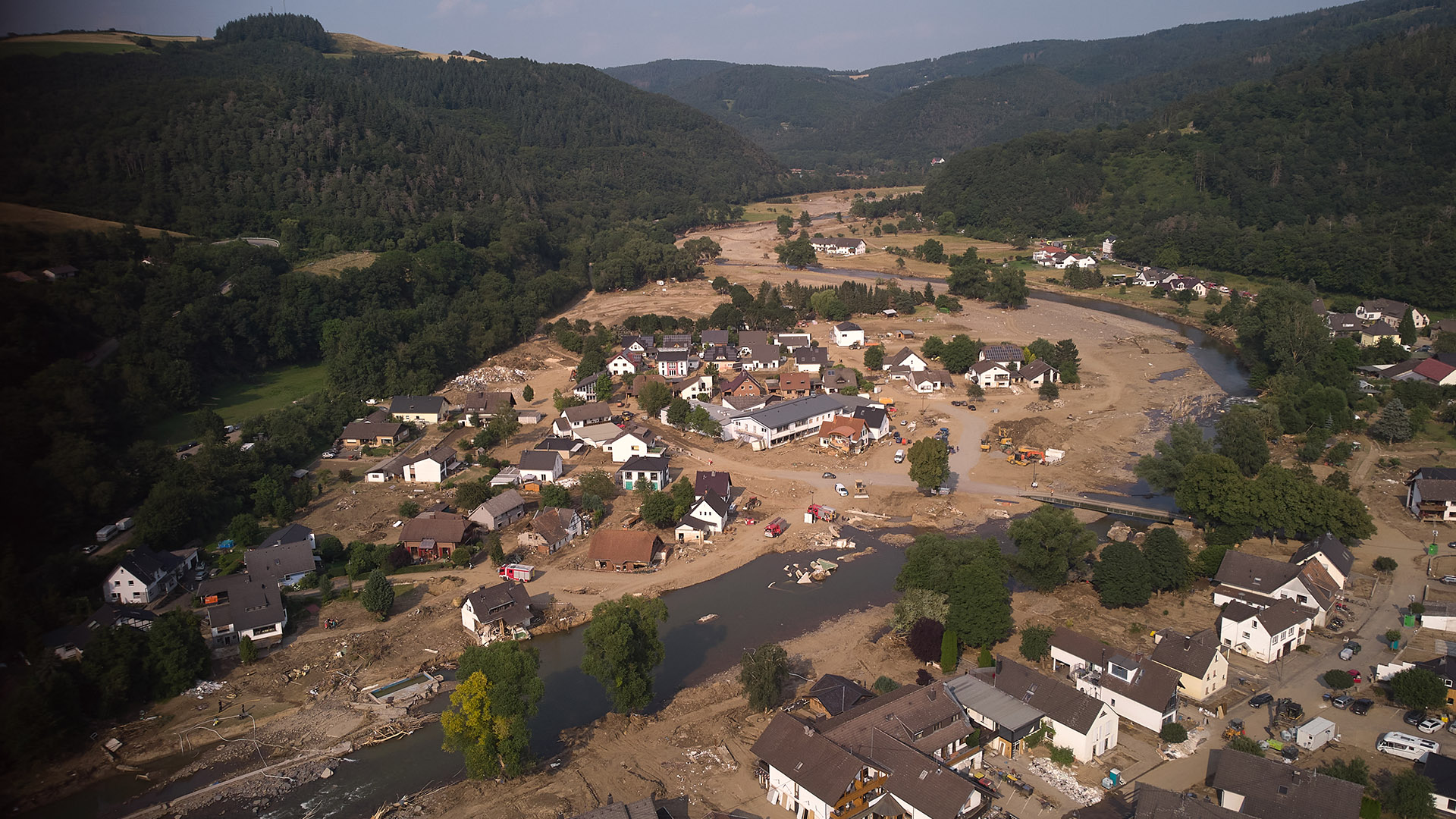interview
Status: 08.08.2021 6:51 PM
After the disaster of torrential rains, the Ahar Valley will not remain the same. In an interview with biologist Wolfgang Busch, he explains what must change so that people can continue to live on the river tagesschau.de.
tagesschau.de: In 2020, the State Office of the Environment in the Rhineland-Palatinate published the last three studies of the Ahr Valley in which I participated. What distinguishes the region?
Wolfgang Busch: The valley amazed me with its diversity: in addition to the semi-Mediterranean grape-growing areas exposed to the sun, there is a short distance between continental, Atlantic and northern climatic influences. The study recorded more than 4,300 animal species, mostly insects, and about 1,200 plant species.
for someone
Biologist Wolfgang Busch teaches as a visiting professor at Hildesheim University. He was one of the lead authors of a three-volume study of the Ahr Valley, published on behalf of the State Office of the Environment in Rhineland-Palatinate. The volumes appeared in 1993, 2003 and 2020. Bosch was born in Bonn. As a student he was involved in biomechanical mapping of the Ahr Valley.
tagesschau.de: What went through your head when you heard about the catastrophe of heavy rain?
Bush: I was amazed that such a catastrophic event could still happen there today. At the same time, I am amazed that proper measures for flood protection have not been taken, even though they have been under discussion for 100 years, because catastrophic floods have been occurring for centuries every 100 years. In the 1920s, already very specific plans were shelved in favor of building the Nürburgring. These include measures such as flood retention basins, which would have held back a total of 11.3 million cubic meters of water.
tagesschau.de: Why didn’t they build?
Bush: The Nürburgring was very important for the structurally weak region at the time. But why were the flood protection schemes no longer implemented in the ensuing period? I don’t have a valid explanation for that. There is a very large conservation project in Upper Ahr that started in 2007 and is funded by the Federal Agency for Conservation of Nature. Many good measures were planned here, except that flood protection was not really taken into account. The Ahr was given more space in many areas of the upper reaches. The so-called “sturgeon stones” were placed in the areas of the mouths of the tributaries and the cultivation of the banks was carried out, which ensured greater dynamism and diversity of the flow. The meadow areas have also been expanded. However – building on the catastrophe of 1910 – concrete accounts of necessary flood protection are missing. In June 2016, another major flood occurred: that would have been a warning sign for me.
In my opinion, other conservation measures have been counterproductive, such as removing small dams in order to create permeability for entire fish and aquatic animals, which can also be accessed via fish ladders. This increased the flow rate. Forestry interventions are also very important. Fir cultures have been widely cut and are now being cut. In the case of heavy rains, this enhances the drainage of water. This is a big problem, not only in Eiffel. The forest plays an important role. We need a mixed natural forest with tree species suitable for the site, such as red beech, oak or ash on the slopes, as well as black alder, poplar and willow on the floodplain.
High concrete walls instead of small terraces
tagesschau.de: In your opinion, who should have acted?
Bush: The responsibility for the nature conservation project lies with the state and, of course, the Federal Government, which finances this project in the amount of twelve million euros. This entire project should now be redesigned under the ‘Flood Protection’ priority as much as possible in accordance with Nature Conservancy. It must extend to all tributaries of the Ahr. It wouldn’t cost twelve million, maybe 200 million.
tagesschau.de: Can people live on Ahr again in the future?
Bush: It must be calculated. In light of climate change, we should expect such torrential rains and floods to occur in shorter succession than before. You can continue to live in the Ahr area only if flood protection can be guaranteed. But there will be changes: for example, near Altenahr-Altenburg, the former oxbow lake stretches around a rock. The area has been continuously settled and built since the 1960s. In addition, the criteria that are applied to the country’s flood risk maps must be reconsidered. Because according to these maps, the inhabitants of this place would have wet their feet at most during severe floods, which are statistically assumed to occur only every 200 years. The houses there were now flooded with water up to the skylight.
It should not happen that commercial establishments are built in the Talao area which closes large areas. You should also take countermeasures when it comes to viticulture. For example, the area between Rich and Dernau was reorganized in the 1970s – an ecological disaster par excellence. Large, steep terraces were created with very high concrete walls. Steep drainage channels were created to drain the water away. Rows of vines are planted toward the slope and bushes in vineyards are partially removed with herbicides. Countermeasures must be taken here. Originally, Ahr was known for its small terraces made of dry stone. These are flatter and more graduated. This causes the water to drain significantly slower.
Settlement is still possible under changing conditions
tagesschau.de: Does this mean that people can live on Ahr if you use the right money and know-how?
Bush: Yes, anyway. This is possible with appropriate measures. Ahr Valley is beautiful. People do not want to lose their homes. However, you must implement the entire catalog of flood mitigation measures consistently. This applies to agriculture as well as the construction of roads and roads. We need fewer seals and tracks made of permeable materials. Each tree next to the water helps reduce the rate of flow. It is also useful to install sewer poles, Riegrol cisterns or rainwater storage tanks that can be integrated into the streets.
tagesschau.de: What are the most urgent steps now?
Bush: First of all, the disaster must be investigated and dealt with. You have to analyze where the torrential rains came, and how it happened that such a huge tidal wave could build up that the scale at Altenahr was demolished at 5.72 meters, and according to calculations, at seven meters – some even say nine meters by a meter – it fell . You always have to assume that it can override the current “worst case” in the future. Based on this, you have to plan for flood protection.
The key is to control the flood tops of the Ahr tributaries so they do not overlap and then build up into a very high tidal wave. We need an intelligent flood management system. This is a task, and engineering skill is required here. The reporting system also needs improvement. It wasn’t a celebrity paper either, what was delivered there. There were definitely flood scenarios. But it was clearly not enough and good enough. So now we have to check everything and come to the conclusion that such disasters will not happen again.

“Certified tv guru. Reader. Professional writer. Avid introvert. Extreme pop culture buff.”





More Stories
OpenAI modernizes enterprise applications | OnlineMarketing.de
Classic espionage, cyber attacks, creating economic dependencies, and technology withdrawal –
How the technology behind ChatGPT powers this bot